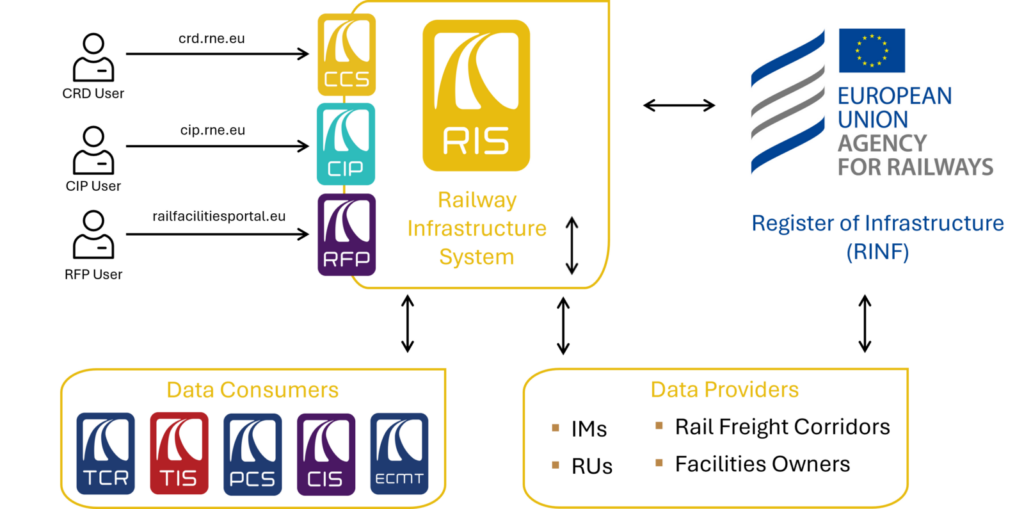On 5 August 2024, RNE officially rolled out the Railway Infrastructure System (RIS), which is now in full operation.
RIS is a digital platform designed to simplify and improve the management of infrastructure railway data by the Infrastructure Managers (IMs) in Europe, addressing current business needs to increase effectiveness of sales, capacity planning and operations.
What is the RIS Rollout all about?
The Railway Infrastructure System (RIS) combines previously existing systems into one planform, while maintaining their dedicated public access. These systems include:
- Central Reference Files Database (CRD), in operation in RIS since 15 April 2024
- Customer Information Platform (CIP), in operation in RIS since 27 May 2024
- Rail Facilities Portal (RFP), in operation in RIS since 5August 2024
RIS as central hub for infrastructure railway data
Integration of various existing systems into the RIS platform creates a single, comprehensive source of essential railway infrastructure data, significantly enhancing operational efficiency.
The data incorporated includes:
- railway network topology
- corridor information
- service facilities
- while also using data from the European Railway Agency’s Register of Infrastructure (RINF)
This integration means that the Rail Facilities, Rail Freight Coordinators, and Telematics TSI topology are now digitally connected to each other and to the rest of the railway network. This connection establishes a foundation for their use in other digital services, similar to how they are already utilised in the Train Information System (TIS).
By connecting to RINF and reusing its data provided by the Infrastructure Managers, RIS will serve as a central hub for infrastructure railway data, expanding the use of the TAF TAP framework and adding new interfaces like railML.

RIS Benefits
RIS has successfully achieved its primary goal of unifying data from multiple systems. This consolidation has resulted in several key benefits, including:
- enhanced functionality and efficiency
- simplified common tasks
- provision of detailed railway data, including validation periods
- cost reduction
- increased cybersecurity
- compliance with legal requirements.
Initiated in 2017, the development of a Big Data framework, which has since evolved into the Railway Infrastructure System (RIS), aimed to create a centralised access point for comprehensive railway network data. This objective has now been successfully achieved, significantly enhancing the services provided by RNE and other systems that require detailed railway information.